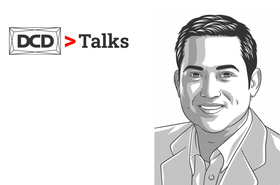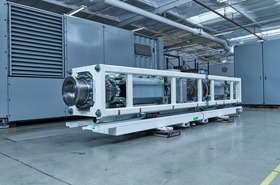In my role as sustainability leader for EcoStruxure IT, I have the unique vantage point of seeing how the IT and data center industry is changing to limit its impact on the environment.
Data centers are voracious energy consumers, accounting for nearly 2.7 percent of European electricity usage it is expected to reach 3.21 percent by 2030. Reducing their environmental footprint and operational costs is becoming a priority and many CIOs, data center owners and operators, and IT professionals are increasingly adopting energy efficiency tools and strategies.
The European Union’s Energy Efficiency Directive (EED) is a comprehensive legislative framework aimed at reducing energy consumption and promoting energy efficiency across various sectors. The recast in 2022 brings into focus data centers.
EED plays a crucial role in setting a baseline for energy consumption to drive energy efficiency improvements and addressing the growing environmental impact of these facilities. The directive has 12 chapters, 17 annexes, and mentions “data center'' 48 times.
Task Reports have been added since the release of the directive in September, and companies are waiting on the final version. I will summarize the key provisions for data centers as it reads today. Data center owners and operators will be expected to report on metrics specified by the EED starting May 2024.
Key provisions of the Energy Efficiency Directive for data centers
- Mandatory reporting: Data center operators with a total rated power of at least 500 kilowatts (kW) are required to publicly report their energy performance data annually. This data includes energy consumption, PUE (Power Usage Effectiveness), temperature set points, waste heat utilization, water usage, and use of renewable energy.
- Waste heat utilization: Data centers with a total rated power exceeding 1 MW must utilize their waste heat for heating purposes or other energy recovery applications unless it is technically or economically unfeasible. This promotes the circular economy and reduces the need for fossil fuels.
- Renewable energy integration: Data centers should prioritize the use of renewable energy sources for their electricity consumption. This effort helps to reduce the carbon footprint of data centers and contribute to a more sustainable energy mix.
- Optimizing energy consumption: Data center operators must implement energy efficiency measures to reduce their overall energy consumption. This includes optimizing cooling systems, using more efficient IT equipment, and adopting virtualization and server consolidation techniques.
Directive goes beyond EU companies, it will have an impact on companies outside of EU
Foreign companies operating within the EU are required to comply with these directives. They must take steps to improve energy efficiency in their operations, which could involve making changes to their facilities, equipment, and processes.
Data center operators can implement IT efficiency tools like DCIM (Data Centre Infrastructure Monitoring) that monitor and optimize the performance of their IT equipment. DCIM can aggregate and report on PUE, total energy consumption with breakdowns by subsystems and even carbon emissions.
Operators will be able to set baselines and start accumulating reports and will be able to use the reports to visualize inefficiencies, unnecessary power consumption and improve overall system efficiency. Companies that comply with the EU Energy Efficiency Directive will reap a variety of benefits almost immediately:
Benefits of implementing Energy Efficiency Directive requirements
The companies that comply with the directive will see benefits including:
- Reduced energy costs: Data centers can lower their operational expenses by optimizing energy consumption and adopting efficient technologies.
- Environmental protection: Improved energy efficiency reduces greenhouse gas emissions and contributes to a more sustainable data center industry.
- Enhanced resiliency: Improved energy efficiency reduces the strain of data centers on the grid, contributing to a more resilient infrastructure and grid.
- Enhanced competitiveness: Energy-efficient data centers gain a competitive edge by reducing operating costs and demonstrating a commitment to sustainability.
- Improved public image: Data centers that meet EED requirements project a positive image of environmental responsibility and align with public concerns about climate change.
DCIM is a great tool to report on the directive. Schneider Electric is invested in supporting you with the evolution of its DCIM solution. Learn more about our DCIM solution – EcoStruxure IT by visiting se.com/DCIM.
More from Schneider Electric
-

DCD>Talks DCIM, energy & sustainability with Jon Gould | Schneider Electric
Jon Gould joins us at DCD>Connect | New York 2024 to share how operators can make the most of their energy availability and utilization
-

Sponsored Schneider Electric collaborates with Nvidia on AI data center design
Unlocking the full potential of AI
-

Schneider Electric and Mainspring Energy partner on fuel flexible microgrid solution
Combines Schneider's EcoStruxure and Mainspring's linear generator

